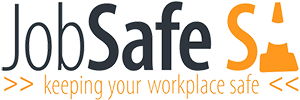Office
Offices vary from multi-storeyed, air conditioned buildings to small areas that are part of warehouses, factories, hospitals and homes. While hazards in the office may not always be as obvious as those in factories, office workers may also face a range of health and safety issues, including poor job design, prolonged repetitive work, moving heavy loads, inadequate lighting and cramped or unsafe work areas.
INJURIES
Injuries that can occur around an office environment include:
1. cuts and abrasions from slips (power cords, bins, chair legs)
2. muscle strains and sprains (workplace ergonomics, lifting and storing)
3. bruising (desk corners, filing cabinet drawers)
WORKSTATION ERGONOMICS
The work area should be large enough to accommodate you, allow the full range of motions involved in performing required tasks, and provide room for the equipment and materials that make up the workstation.
Optimum reach zone: Where frequently used objects are close to the user to avoid excessive extended reaching.
Maximum reach zone: Objects that are needed during the day yet not frequently used. Requires the user to reach and stretch slightly to access.
Outer reach zone: Where seldom used objects (e.g. in/out trays) are located as this section requires the user to perform excessive extended reaching.
General features of good desk design – Outlines what constitutes an appropriate work desk.
|
ITEM |
POSSIBLE HAZARD |
SOLUTION |
| Compactus |
|
|
| Archive boxes and other heavy lifted items |
|
|
| Mobile trolleys |
|
|
| Heavy lap top carriers or other bags |
|
|
Other hazards in the office environment include:
| Workstation Ergonomics | Slips and Trips | Fatigue |
| Stress | Manual Handling | Bullying |
FILING CABINETS
What is the hazard?
1.People walking into drawers that have been left open
2.People getting hit by doors when someone is trying to access the filing cabinet that is located behind a door
3.When more than one drawer is open at a time the cabinet can become unstable and tip over.
What are the injuries?
1.small abrasions
2.strains and sprains
3.bruises
How is it preventable?
1. Allow 1.2 metres in front of the drawers
2. Do not place in thoroughfares, corridors, behind doors or near emergency exits
3. Always close drawers after use
4. Have only one draw open at a time (most modern filing cabinets are fitted with a maximum one drawer open safety mechanism)
Repetitive Strain Injury (RSI) or Occupational Overuse Syndrome (OOS)
Caused though the repetitive and frequent use of general office equipment such as staplers, letter openers, keyboards, pens etc. This repetitive action causes strain on the shoulders, excessive compression on the palm of the hand and general discomfort.
OSS or RSI can result in:
- Carpel Tunnel Syndrome
- Reynauds Syndrome or White Finger Disease
- Thoracic Outlet Syndrome
- Back Pain
- Degenerative Disc Disease
Tips for avoiding RSI or OOS
Identify and correct postural problems
The aim is to eliminate fixed positions which impose static loads on the muscles of the back, neck, shoulders and arms. Poor or improperly-adjusted equipment, furniture or layout is often to blame.
Identify and eliminate forceful movements
The worst are those which involve fingers, hands and wrists, especially with bending or twisting. Check tools, knobs, processes, postures. Do things fit? Is maintenance happening?
Identify and break up periods of repetitive work
The aim is physical variety; use rest pauses and alternated tasks. Consult staff before introducing job rotation.
Ensure that any tell-tale early-warning signs are noticed and acted upon
Supervisors and staff alike will require (a) training and (b) incentives to do this. It is essential to encourage a climate in which early reporting is encouraged.
Educate supervisors in the recognition and correction of faulty workplace set-out and procedures
They should then be accountable for managing this.
Train staff to recognise and adjust their own workstations properly
The benefits of “ergonomic” furniture may otherwise be lost. Be sure to include thorough instruction for all new staff.
Know which staff are most vulnerable to overuse strain
New staff (how thorough is your induction?); those returning from leave; jerky or tense workers; staff using hands and fingers a lot.
ADDITIONAL INFORMATION
Officewise A guide to Health and Safety in the office
A 100 page publication intended for use as a resource for managers, supervisors and anyone involved in office work. Officewise covers: Managing occupational health and safety in the office, risk management, hazards, job and work environment design, office layout, workstations, furniture, working with computers, exercises, manual handling, and advice.
Preferred Posture
As we spend increasing amounts of time at our computer workstation, we need to be aware of how the design and arrangement of our equipment can impact our comfort, health, and productivity.
Australian Standard AS 3590 – 1990 Screenbased workstations, part 2
Acknowledgements:
The University of Melbourne Office Ergonomics
Worksafe Victoria: Officewise A guide to Health and Safety in the office
Centres for Disease Control and Prevention – Computer Workstation Ergonomics
